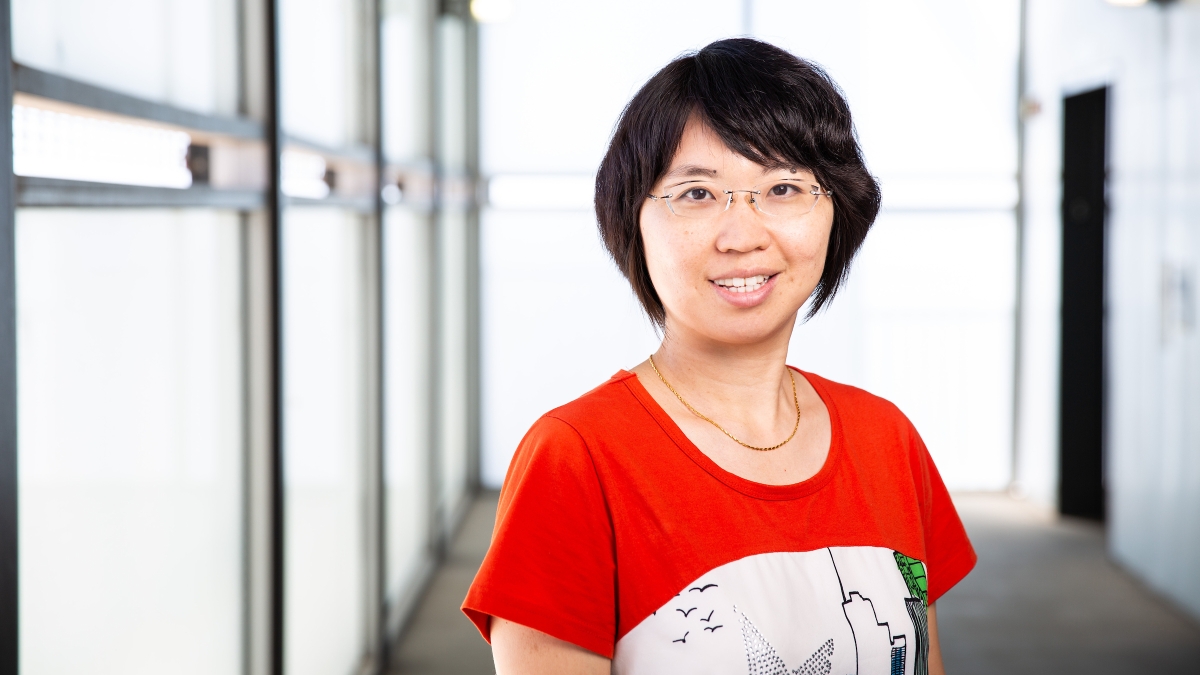Professor honored for her contributions to spatial analysis with national award

Wenwen Li, associate professor with the School of Geographical Sciences and Urban Planning, was named an Emerging Scholar by the Spatial Analysis and Modeling Specialty Group during the annual meeting of the American Association of Geographers.
Each year, geographers from around the country and the world gather for the annual meeting of the American Association of Geographers. Part of the meeting includes recognizing geographers for their work and achievements over the past year. Wenwen Li, associate professor with the School of Geographical Sciences and Urban Planning at Arizona State University, was among those were honored.
During the annual meeting, Li was named an Emerging Scholar by the Spatial Analysis and Modeling Specialty Group. The emerging scholar award honors early- to mid-career scholars who have made significant contributions to education and research initiatives that are congruent with the mission of AAG-SAM.
“It is a great honor to be selected for this award,” said Li. “Getting recognized by peers is a great encouragement for me to continue pushing the edge of spatial analysis and modeling research with immersive technology, such as artificial intelligence.”
The award came as no surprise to her colleagues, as Li has been instrumental in the creation of significant advances and contributions to the fields of geography and spatial analysis.
“In just a few years’ professional career, Dr. Li has achieved amazing accomplishments and made a significant contribution to the spatial analysis and GIScience community,” said Stewart Fotheringham, Regents' Professor in the School of Geographical Sciences and Urban Planning. “She has published nearly 100 papers in peer-reviewed journals, books and conference proceedings.”
This award adds to a growing list of accolades for Li, who has also been awarded the prestigious CAREER award from the National Science Foundation.
“(Li’s) work is at the cutting edge of spatial analysis and modeling, using cyberinfrastructure, artificial intelligence and high-performance computing to explore new questions about the geographic world, in both environmental and social domains,” remarked Michael Goodchild, research professor with the School of Geographical Sciences and Urban Planning and emeritus professor at the University of California, Santa Barbara. “She is comfortable in geography, computer science and data science, and is one of a very small handful of promising new scholars with world-class qualifications in these novel areas of spatial analysis and modeling.”
Li’s current projects continue to link big data with cyberinfrastructure, including PolarHub, which aims at solving the big data access problem of how to automatically mine and discover distributed geospatial data in the deep web, and PolarGlobe, a web-based, large-scale, virtual-globe visualization platform to support multidimensional visualization of Earth data. She is also looking to venture into the world of artificial intelligence, specifically geospatial artificial intelligence, in which she hopes to leverage AI to support smart and large-scale automated recognition of natural features on both surfaces of Earth and other planets.